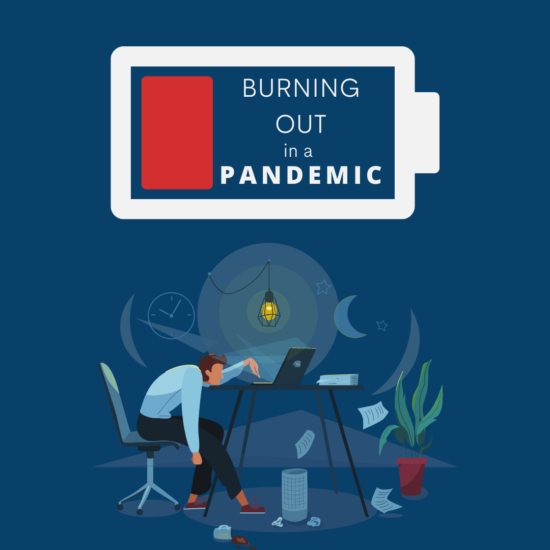
The initial shift to remote learning for staff and faculty occurred in March 2020, and pandemic burnout has become an unforeseen reality in the year since.
Computer science professor Mark Eramian says that, initially, his biggest concern with the transition to remote learning was the effective delivery of online courses. It was not until Fall 2020 that he recognized that “burnout would become an issue very quickly.”
Eramian says the beginning of the school year went okay for him, but he soon started having trouble sleeping and struggled with stress management.
“I use a lot of different avenues of communication with my students so that I can try to not make them feel disconnected, but … it created the expectation that I would be available for immediate online responses 24 hours a day, seven days a week,” Eramian said.
“I didn’t realize that I would have to discipline myself to not be available all the time, and to take that time off so that the line between work and home life is not blurred.”
Various survey polls in the United States show that a significant number of American faculty members felt more stressed, fatigued and frustrated over the past year.
In Canada, educators across the country have spoken up about heavy workloads and chronic stress as the main contributors to burnout.
The same is happening for students. A report released by Statistics Canada in May 2020 indicated that youth aged 15 to 24 were more likely to report worsening mental health issues since physical distancing began.
Nik Porrelli, a third-year education student, says that when remote learning first started, he was eager for updates about in-person activities and the uncertainty of the future became a challenge for him.
“As soon as you get your hopes up that it’s going to be over soon and it’s [not], then you’re disappointed. On the other hand, you can’t act as if it’s never going to end because it will,” Porrelli said.
“You [have] to put it out of your mind and just accept the circumstances.”
Although he is glad to have most of his acting classes in person, managing them alongside online courses is “especially stressful” for Porrelli. The new guidelines for entering campus include time-consuming but necessary sanitization procedures, he says.
On the other hand, Porelli says his peers taking only online courses face an overwhelming workload.
“Your normal break time at home is no longer break time and it’s hard to have a routine when you’re not switching locations,” Porrelli said.
“You’re always living in a perpetual state of ‘I should be doing that,’ because you’re always at home with your computer… You always have that weighing down on you.”
Eramian says that increased workloads have also become an issue for him since the start of the pandemic. Although preparation time for lecture material is similar to how it was for in-person delivery, recording, editing and uploading material requires additional time. Eramian is okay with teaching courses online or in person but hopes professors will not be expected to handle both simultaneously during the return to campus.
“If you put too much burden on the professors, this is ultimately going to affect the students. It’s going to be a disservice to everyone,” Eramian said.
Porrelli says there have been plenty of frustrations working in an online environment, whether it is due to technical difficulties, time conflicts between classes or students receiving more work because of the assumption that they have more free time.
Fall 2021 brings the excitement of returning to campus, but it is also surrounded by uncertainty. Porrelli anticipates heavier workloads upon returning to campus and inefficient systems due to the transition.
“I think it’s going to be another term of a heavier workload and systems that were thrown together quickly out of necessity. It’s going to be stressful for people and also potentially going to leave a bad taste in their mouth about university,” Porrelli said.
Overall, Eramian says there are still many unknowns about the return to campus.
“I think that we have to give up on the idea that we’re going back to normal, that we’re going actually forward to a new normal,” Eramian said.
“Some things might go back to the way they were, but others don’t have to, and maybe shouldn’t.”
—
Fiza Baloch | Staff Writer
Graphic: Ishita Mann